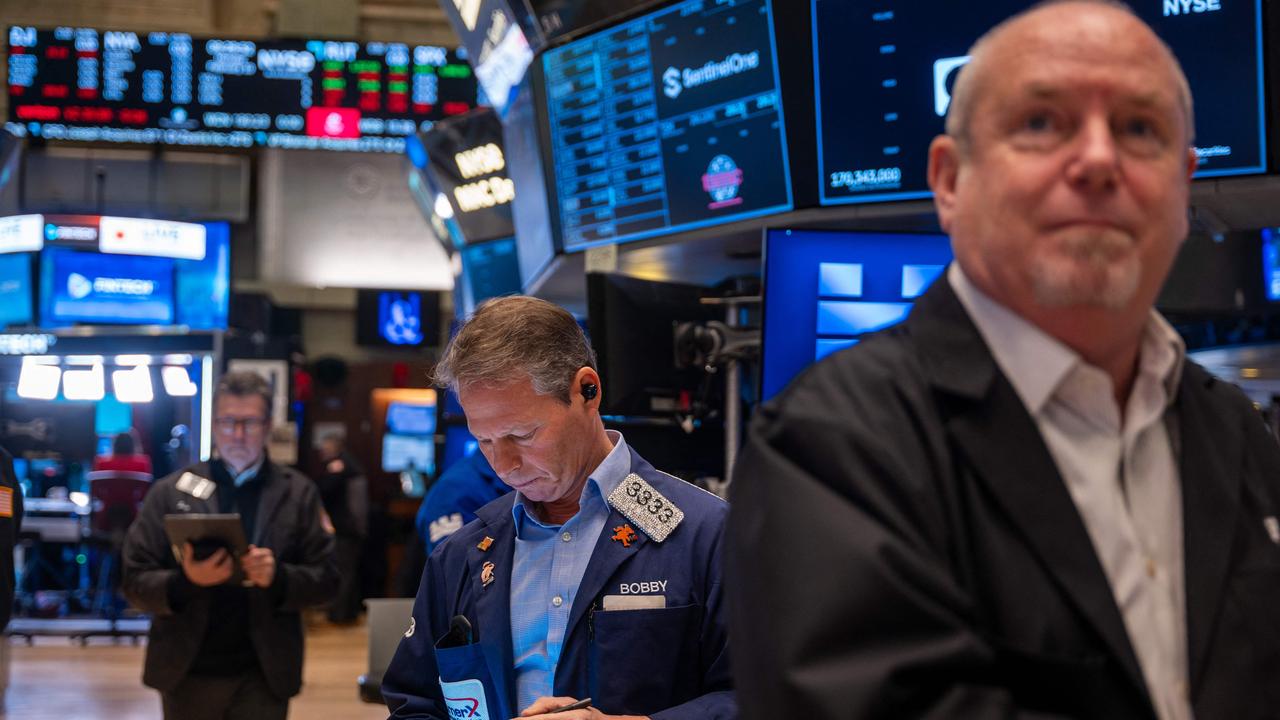Next phase of AI cycle favours rotation to value and other regions, says Vanguard
Vanguard chief economist Joe Davis sees more upside in potential beneficiaries of the AI boom like health care and financials than the tech sector.

Vanguard’s Joe Davis sees US stocks returning less in the next 10 years than the last decade.
It’s not exactly a bearish call – the S&P 500 averaged 15.6 per cent per annum versus a long-term average of 10.6 per cent. However, the chief economist and head of investment strategy at the funds management giant now sees more upside in potential beneficiaries of the AI boom like health care and financials than tech. He also sees the bull market broadening to regions including China.
In his view the US economy is a bit like 1992 but the stockmarket is more like 1998.
“There’s a 90 per cent probability that US returns are definitely lower,” Mr Davis told The Australian.
“If we have that, then we have bigger issues, because that means that we’re really late 1990s.”
Productivity-enhancing AI technology may drive above-trend economic growth but “just because the technology is transformational doesn’t mean the stockmarket keeps going up at a very high rate”.
With about $10.4 trillion ($16.5 trillion) of assets under management, Vanguard is the world’s second-biggest fund manager. It’s number two in ETFs and number one in mutual funds.
Mr Davis sees AI having a “transformative effect” on industry and productivity. His book on the subject – due to hit the shelves in May – has modelled the impact of AI by way of a scenario analysis.
He thinks it will be bigger than personal computers in the 1970s but less than electricity in the 1920s.
“We’re fairly constructive on what it’ll do for the next five to seven years,” Mr Davis said.
“Electricity was really special – it probably had the biggest economic impact of any technology in the past 150 years. Of course the steam engine is up there in terms of transformative impact.”
In his view, AI is unlikely to be that strong, but he’s keeping an open mind.
“Even with that, the strongest earnings growth over a four to 10-year period in US history was over 20 per cent during the 1920s when electricity expanded.
“To justify US valuations you need twice that earnings growth – 40 per cent – not going to happen.”
But while the US tech sector looks overvalued, it won’t necessarily correct lower.
“It definitely has to cool down but if we’re right in our economic assessment, other parts of the market within the US or other countries – outside of technology – can start to do a little bit better returns.”
He also emphasises the importance of understanding the different phases of AI development.
“Phase one is a little bit of the euphoria and the build-out of the technology,” he said.
“Technology stocks always outperform in that first phase of the cycle.
“What happens in phase two, which will be the next seven years, is the broadening of the usage.
“Think about the late 1990s – other parts of the market have stronger returns – value stocks, financials and health care – and you can actually have not necessarily negative performance, but you have a relative underperformance of the technology sector itself.”
It’s an irony that he has observed in every comparable similar cycle.

What’s interesting in terms of the regional broadening thesis, is the fact that the S&P 500 has stalled since the DeepSeek news three weeks ago. But stockmarkets in Europe and Australia have soared to fresh record highs and Chinese markets are turning up.
US inflation jitters – fuelled by a nascent tariff war, stronger than expected non-farm payrolls data and higher than expected CPI data – have also been a headwind for US stocks in recent weeks.
“It’s not necessarily the things in the headlines, such as tariffs,” Mr Davis said.
“It’s the fact that, particularly in the US, economic growth is fairly resilient, and policy makers aren’t as restrictive as they think, so it’s premature to declare a full victory over inflation, and there’s the risk that we continue to see tighter labour markets.
“Labour supply really increased a lot last year, and that’s slowing through immigration. Similar dynamics are at play in Australia, even as inflation has fallen enough for the RBA to cut rates.
“The question is, where we are a year from now on,” Mr Davis said. “It wouldn’t surprise me, if the RBA a year from now, if there’s a bias, it’s towards raising rates, not cutting them.”
Davis isn’t outright bearish on the US stockmarket but admits that the risk premium is “pretty slim”.
“We’re not saying we’re bearish because we have some negative AI assessment,” he said.
“We have a guarded view on the equity market despite having a fairly constructive AI outlook”.
Mr Davis sees the low-cost AI development by China’s DeepSeek last month as “the first of many.”
“History is very clear with technology and what that means for the equity market,” he said.
Underlining the flood of AI developments there’s been over 5000 AI companies funded in the United States the past four years – more than the total number of publicly traded US securities.
“So what do you think that’s going to do to prices and competition,” he said.
His research indicates that the two sectors that show the biggest profitability lift from AI adoption are healthcare and financial companies, both through automation and scale.
“That’s the most intelligent way to think about AI and technology for the next seven years.
“Not the first phase. The first phase of the technology is fixation. But this happened in the late 90s too.”
More Coverage
Originally published as Next phase of AI cycle favours rotation to value and other regions, says Vanguard





